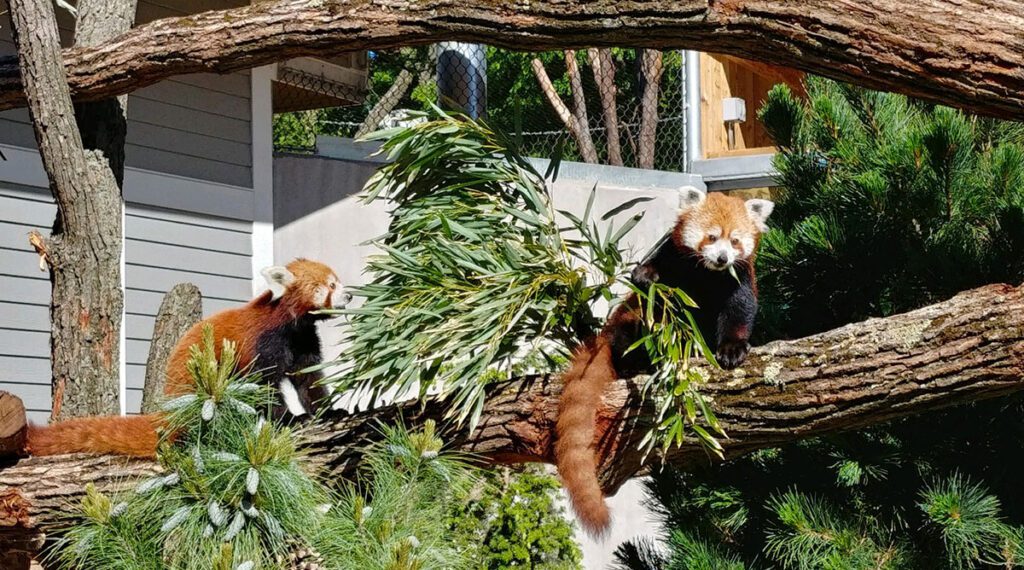July 11, 2018
This spring, we welcomed red pandas to Seneca Park Zoo with the opening of the new Cold Asia area. Red pandas are small mammals with thick, reddish fur and long, bushy dark-ringed tails. Previously classified into the raccoon family, Procyonidae, red pandas are now in their own family, Ailuridae. They’re found in the very high altitudes of the Himalaya Mountains where the climate is temperate and cool. Their main diet consists primarily of bamboo leaves and shoots. The average life span of the red panda is 8-10 years in nature, compared to 10-12 years in human care. One of their most unique adaptations is a modified wrist bone that allows them to grasp food and climb down trees head first.Red pandas are the original pandas and were discovered long before giant pandas were. They share the same name because panda translates to the Nepali word for ‘bamboo eater’, which is the primary food source for both species.
Giant pandas are part of the bear family, are much larger in size, and are more dangerous than red pandas. With red pandas, zoo keepers can generally share the same space with them, while taking care to keep us both safe. Keeper staff is trained to read their behavior, and how to move around them in a safe manner.Seneca Park Zoo is home to two red pandas, a four-year-old male named Blaze and a one-year-old female named Starlight. Blaze was born on July 19, 2013 and Starlight was born on June 17, 2017. Blaze is lighter and more orange in color, and has longer whiskers and ear fur. Starlight on the other hand is darker and redder in color, and has shorter whiskers and ear fur. Blaze is shyer and tends to keep to himself, while Starlight is young, bold, and unusually curious.
Blaze’s favorite thing to do is take a long nap in a nice, quiet place way up high. Starlight moves about more, and is fascinated with her keepers’ shoes. Their favorite enrichment includes sod and new logs, while their preferred treats are all kinds of grapes, apples, pears, and blueberries.Red pandas are very elusive creatures that are extremely difficult to spot in their natural range. While it’s much easier to see them at zoos, it’s not without some inherent challenges. Red pandas are adapted to living in very cold climates, so the best season to see them outside will be in the winter, which is also when they’ll be the most active. In the meantime, the best days to visit the red pandas at the Zoo are when it’s cool and cloudy. Red pandas are most active at dawn and dusk, so planning your trip for before 11 a.m. or after 3 p.m. will give you the best chances of seeing them exploring their outdoor area.
Midday is nap time, at which point Blaze and Starlight take turns at going in and out. We encourage you to stop by their habitat a few times during your visit or hang out by their area for a bit longer than normal to increase your chances of seeing them. When the red pandas are visible, the best way to keep them that way is to quietly observe and admire them. They are very sensitive to quick movements and loud noises. This will help them adjust to their new surroundings a lot quicker. Although they are getting more and more comfortable with their environment each day, this is the first time they’re living in an open-air habitat. We thank you for your support, and we hope you enjoy them as much as we do!– Heidi Beifus, Zoo Keeper
(Featured image: L-R; Blaze and Starlight)








